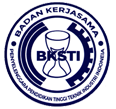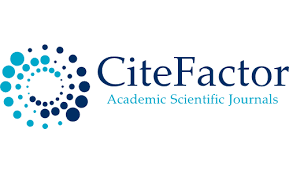Evaluation of Ecological Minimum Quantity Lubrication Turning of AISI 4340 Alloy for Parametric Choices Using the Distance from Average Solution (EDAS) Method
Abstract
Keywords
Full Text:
PDFReferences
Abas M., Alkahtani M., Khalid Q.S., Hussain G., Abidi M.H., Buhl J. (2022). Parametric study and optimization of end milling operation of AISI 1522H steel rising definitive screening design and multicriteria decision-making approach, Materials, 15(12), Article 4086. https://doi.org/10.3390/ma15124086
Anadan V., Baba M.N., Sezhian M.V., Yildrim C.V., Baba M.D. (2021). Influence of grapheme nanofluid on various environmental factors during turning of M42 steel. Journal of Manufacturing Processes, 68, 90-103. https://doi.org/10.1016/j.mapro.2021.07.019
Attri R., Dev N., Kumar K., Rana A. (2014). Cutting-fluid selection using complex proportional assessment method. International Journal of Services and Operations Management, 18(4), 359-377. https://doi.org/10.1504/IJSOM.2014.063241
Babu M.N., Anandan V., Babu M.D. (2021). Performance of ionic liquid as a lubricant in turning Inconel 825d via minimum quantity lubrication method. Journal of Manufacturing Processes, 64, 793-804. https://doi.org/10.1016/j.mapro.2021.02.011
Cai L., Feny Y., Lu Y-T., Lin Y-F., Hung T.-P., Hsu F-C., Liang S.Y. (2022). Analytical model for temperature prediction in milling AISID2 with minimum quantity lubrication. Metals, 12(4), 697. https://doi.org/10.3390/met.12040697
Das C.R., Ghosh A. (2023). Performance of carbide end mills coated with new generation nanocomposite TiAlSiN. in manufacturing of austenitic stainless steel under near-dry (MQL) and flood cooling conditions. Journal of Manufacturing Processes, 14, 418-442. https://doi.org/10.1016/j.jmapro.2023.09.020
Du F., Zhou T., Tian P., Chen J., Zhou X., He L., Ren A. (2023). Cutting performance and cutting fluid infiltration characteristics into tool chip interface during MQL milling. Measurement, Article 113989, https://doi.org/10/1016/j.measurement.2023.113989
Elsheikh A.H., Elaziz M.A., Das S.R., Muthuramalingam T., Lu S. (2021). A new optimized predictive model based on political optimizer for eco-friendly MQL-turning of AISI 4340 alloy with nano-lubricants Journal of Manufacturing Processes, 67, 562–578. https://doi.org/10.1016/j.jmapro.2021.05.014
Filho S.L. M. R., Vieira J.T., de Oliveira J.A., Arruda E.M., Brandao L.C. (2017). Comparison among different vegetable fluids used in minimum quantity lubrication systems in the tapping process of cast aluminum alloy. Journal of Cleaner Production, 140(3), 1255-126. http://doi.org/10.1016/j.jchepro.2016.10.032
Gajrani K.K., Rani D., Sankar M.R. (2017). Biodegradation and hard machining performance comparison of eco-friendly cutting fluid and mineral oil using flood cooling and minimum quantity cutting fluid techniques. Journal of Cleaner Production, 165, 1420-1435. https://doi.org/10.1016/j.jclepro.2017.07.217
Gajrani K.K., Suvin P.S., Kailas S.V., Sankar M.R.. (2019). Hard machining performance of indigenously developed green cutting fluid using flood cooling and minimum quantity cutting fluid. Journal of Cleaner Production, 206, 180-123. https://doi.org/10.1016/j.jcle Pro. 2018. 09.178
Gueli M., Ma J., Cococcetta N., Pearl D., Jahan M.P. (2021). Experimental investigation into tool wear, cutting forces and resulting surface finish during dry and flood coolant slot milling of Inconel 718. Procedia Manufacturing, 53, 236-245. https//doi.org/10/1016/j.promfg.2021.06.026
Keshavarz-Ghorabaee, M., Zavadskas, E. K., Olfat, L., &Turskis, Z. (2015). Multi-criteria inventory classification using a new method of evaluation based on distance from average solution (EDAS). Informatica, 26(3), 435-451. https://doi.org/10.15388/informatica.2015.57
Kumar S.T.P., Prasad H. P.T.. (2021). Investigate the effect of nano cutting fluid and cutting parameters under minimum quantity lubrication (MQL) on surface roughness in turning of DSS-2205. Materials Today: Proceedings, 43(6), 3643-3649. https://doi.org/10.1016.j.matpr.2020.09.834
Kumar A., Bhardwaj. R., Joshi S.S. (2022). Thermal analysis of drilling in titanium under flood and cryogenic cooling using coupled CFD and FEM. Journal of Manufacturing Processes, 81, 605-623. https://doi.org/10.1016/j.jampro.2022.06.075
Li M., Yu T., Yang L., Li H., Zhang R., Wang W. (2019). Parameter optimization during minimum quantity lubrication milling of TC4 alloy with graphene-dispersed vegetable-oil based cutting fluid. Journal of Cleaner Production, 209, 1508-1522. https:/doi.org/10.1016/j.jclepro.2018.11.147
Maruda R.W., Arkusz K., Szczotkarz N., Wojciechowski S., Nieslony P., Krolczyk G.M. (2023a). Analysis of size and concentration of nanoparticles contained in cutting fluid during turning of 316L steel in minimum quantity lubrication conditions. Journal of Manufacturing Processes, 87, 106-122. https://doi.org/10.1016/j.jmapro.2022.12.065
Mallick R., Khatai S., Kumar R., Panda A., Sahoo A. K., Mishra R.R. (2023). Comparison of single nozzle and dual nozzle MQL performance in hardened steel turning: A case study. Materials Today: Proceedings, https://doi.org/10.1016/j.matpr.2023.10.022
Maruda R.W., Szczotkarz N., Michalsk M., Arkusz K., Wojciechowski S., Niestony P., Khanna N., Knolczyk G.M. (2023b). Evaluation of tool wear during turning of Ti6Al4V alloy applying MQL technique with Cu nanoparticles diversified in terms of size. Wear, 532-533, Article.205111. https://doi.org/wr1016/j.wear.2023.205111
Revuru R.S., Pasam V. KeySyed I., Paliwal U.K. (2018). Development of finite element based model for performance evaluation of nano cutting fluids in minimum quantity lubrication. CIRP Journal of Manufacturing Science and Technology, 21, 75-85. https://doi.org/10.1016/j.cirpj.2018.02.005
Sankar M.R., Choudhury S.K. (2015). Experimental Study and modelling of machining with dry compressed air, flood and minimum quantity cutting fluid cooling techniques. Procedia CIRP, 31, 228-233. https://doi.org/10.1016/j.procir.2015.04.089
Sharma A., Kumar R. (2021). Potential use of minimum quantity lubrication (MQL) in machining of biocompatible materials using environment friendly cutting fluids “An overview. Materials Today: Proceedings, 45(6), 5315-5319 https://doi.org/10.1016/j.matpr.2021.01.904
Sonawane P.R., Bhanagle J.H., Thakur S.V., Koli B.R., Dole N.B., Kolambe C., Barjibhe R.B. (2022). Analysis of cutting fluid on minimum quantity lubrication by using vegetable oil. Materials Today: Proceeding, 68(6), 2435-2442. https://doi.org/10/1016/j.matpr.2022.09.144
DOI: http://dx.doi.org/10.22441/ijiem.v5i3.22752
Refbacks
- There are currently no refbacks.

This work is licensed under a Creative Commons Attribution-NonCommercial 4.0 International License.
IJIEM - Indonesian Journal of Industrial Engineering & Management
Program Pascasarjana Magister Teknik Industri Universitas Mercu Buana
Kampus Menteng - Gedung Tedja Buana, Floor 4th
Jl. Menteng Raya No. 29 Jakarta Pusat- Indonesia
Tlp.: +62 21 31935454 Fax: +62 21 31934474
http://publikasi.mercubuana.ac.id/index.php/ijiem
Email: [email protected]

This work is licensed under a Creative Commons Attribution-NonCommercial 4.0 International License.
The journal is indexed by:






1.png)
.png)
.png)
.png)







